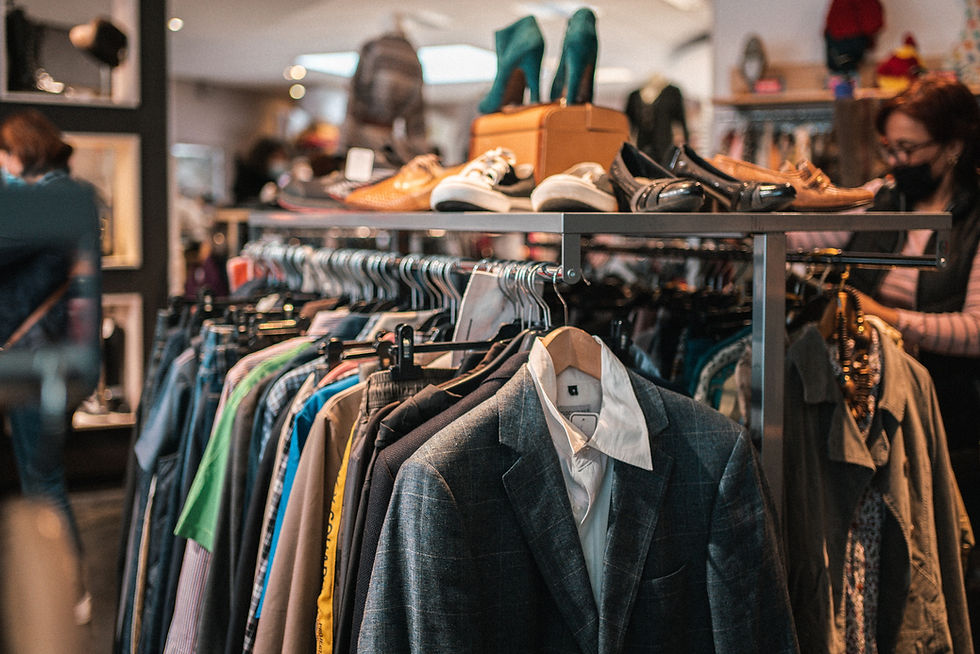Circular Economy and Upcycling in Fashion
- SUSFUTURE

- Apr 27, 2024
- 3 min read
Updated: Apr 28, 2024
Keywords: Circular Economy, Upcycling, Sustainability, Fashion Industry, Consumer Engagement

The fashion industry has long been criticized for its significant environmental impact, with issues such as waste, pollution, and resource depletion being major concerns. However, the emergence of the circular economy and the growing trend of upcycling in fashion offer promising solutions to address these challenges.
The circular economy is a model that aims to keep products, components, and materials at their highest utility and value at all times, minimizing waste and environmental impact 1. In the context of fashion, this translates to designing garments and accessories that can be easily repaired, reused, or recycled at the end of their life cycle.
Upcycling, a key component of the circular economy, involves transforming discarded or used materials into new products of higher quality or value than the original 1. In the fashion industry, upcycling has gained significant traction as designers and brands explore innovative ways to breathe new life into old garments and textiles.
One example of successful upcycling in fashion is the work of designer Christy Dawn, who creates sustainable dresses from deadstock fabric, ensuring that valuable materials are not wasted . Another brand, Wholesome Culture, offers eco-friendly apparel made from organic cotton, recycled plastic bottles, and bamboo, demonstrating the potential for sustainable material innovations.
The integration of upcycling into conventional garment manufacturing processes has been the focus of a practice-led study, which has highlighted the challenges and opportunities in this area 12. The study found that upcycling can be successfully integrated into mass production, but it requires careful consideration of design, production, and supply chain management.
Consumers are also playing a crucial role in the shift towards a more circular fashion industry. Studies have shown that consumers are increasingly willing to pay more for responsibly made garments and are embracing fashion rental and resale platforms, which promote the reuse and recycling of clothing 3.
However, the fashion industry still faces legal and regulatory hurdles when it comes to upcycling. The use of trademarked elements in upcycled products can raise concerns about consumer confusion and unfair freeriding, leading to potential trademark infringement issues 4. Addressing these legal challenges will be crucial for the widespread adoption of upcycling in the fashion industry.
In conclusion, the circular economy and upcycling offer promising solutions to the environmental challenges faced by the fashion industry. By designing for longevity, repairability, and recyclability, and by transforming discarded materials into new products, the fashion industry can move towards a more sustainable and responsible future. Continued innovation, consumer engagement, and the resolution of legal obstacles will be key to the successful implementation of these circular economy principles in the fashion sector.
References:
IBM. (n.d.). Sustainability trends: 5 issues to watch in 2024. IBM Blog. https://www.ibm.com/blog/sustainability-trends-2024
1 Sung, K., Cooper, T., & Kettley, S. (2014). Individual upcycling practice: Exploring the possible determinants of upcycling based on a literature review. In Proceedings of the Sustainable Innovation 2014 Conference (pp. 237-244).
2 Wu, D., Zhuang, M., Zhang, X., & Zhao, Y. (2023). Towards Circular Fashion: Design for Community-Based Clothing Reuse and Upcycling Services under a Social Innovation Perspective. Sustainability, 15(1), 262. https://doi.org/10.3390/su15010262
3 Park, H. J., & Lin, L. M. (2020). Exploring Attitude–Behavior Gap in Sustainable Consumption: Comparison of Recycled and Upcycled Fashion Products. Journal of Business Research, 117, 623-628. https://doi.org/10.1016/j.jbusres.2019.11.033
4 Kur, A. (2023). Fashion Upcycling and Trademark Infringement – A Circular Economy Perspective. SSRN. https://doi.org/10.2139/ssrn.4470873










Comments